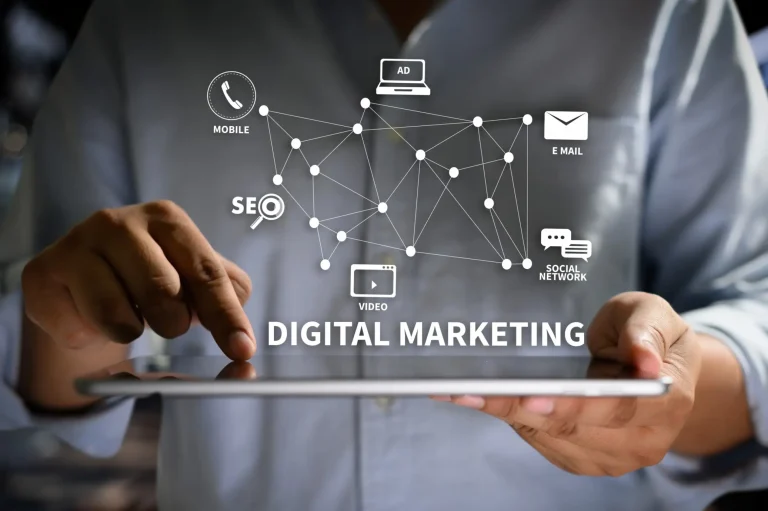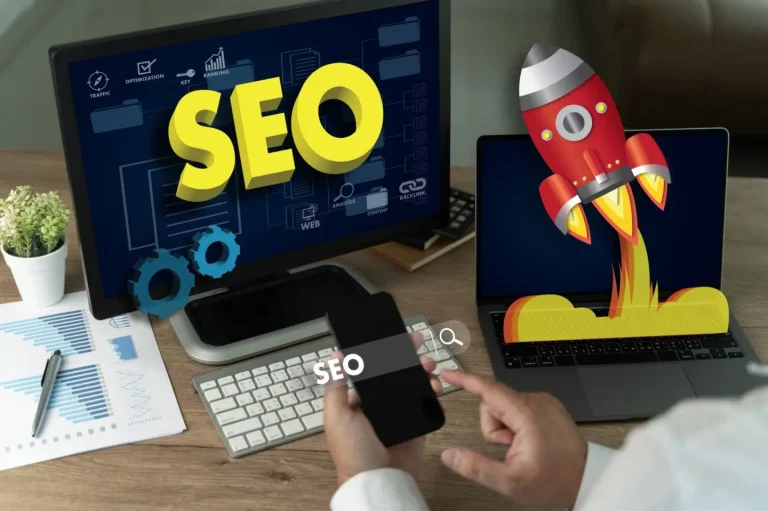How to Create a Digital Marketing Strategy for SaaS Products

Introduction
In the fast-paced world of Software-as-a-Service (SaaS), standing out from the competition requires more than just a great product. A well-executed digital marketing strategy is the key to increasing visibility, acquiring customers, and driving sustainable growth. Whether you’re an established SaaS development company or a startup looking to disrupt the market, this guide will walk you through the essential steps to crafting a winning digital marketing strategy.
Understanding the SaaS Marketing Landscape
SaaS products differ from traditional software in that they operate on a subscription model, requiring businesses to focus on customer acquisition, retention, and lifetime value. This means that a digital marketing strategy for SaaS must be dynamic, scalable, and heavily data driven.
Why Digital Marketing is crucial for SaaS
- Competitive Market – With thousands of SaaS solutions available, a strong online presence is critical.
- Customer Journey Complexity – The SaaS sales funnel is non-linear, often requiring multiple touchpoints before conversion.
- Subscription-Based Model – Retention is as important as acquisition, making ongoing engagement essential.
- Data-Driven Decisions – Digital marketing allows for precise tracking and optimization.
Step 1: Define your Target Audience
A well-defined audience is the foundation of any successful digital marketing strategy. Ask yourself:
- Who benefits the most from your SaaS product?
- What are their pain points?
- Where do they consume content?
- What influences their purchasing decisions?
Create Buyer Personas
Developing detailed buyer personas helps tailor marketing efforts to the right audience. Consider:
- Demographics (Age, location, job title, industry)
- Behavioural Data (Tech-savviness, purchasing behaviour, content preferences)
- Pain Points & Solutions (Challenges they face and how your SaaS solves them)
Step 2: Build a High Performing Website
Your website is the hub of your SaaS marketing strategy. It should be:
- User-Friendly & Responsive – Seamless experience across all devices.
- Optimized for SEO – Strong keyword strategy to rank higher in search engines.
- Fast & Secure – Slow loading times can lead to high bounce rates.
- Conversion-Optimized – Clear CTAs, landing pages, and free trial/demo options.
Step 3: Leverage SEO for Organic Growth
Search Engine Optimization (SEO) is critical for driving high-intent traffic to your website.
On-page SEO
- Use targeted keywords like SaaS Development Company and long-tail variations.
- Optimize page titles, meta descriptions, and headers.
- Improve site speed and mobile usability.
Off-page SEO
- Build high-quality backlinks from authoritative websites.
- Guest blogging on industry-related sites.
- Social media sharing to increase visibility.
Technical SEO
- Implement schema markup for rich snippets.
- Optimize internal linking structure.
- Fix crawl errors and broken links.
Step 4: Content Marketing – Educate & Engage
Content marketing plays a pivotal role in SaaS digital marketing. The goal is to provide value while subtly promoting your product.
Types of content to create
- Blog Posts & Articles – Cover industry trends, how-to guides, and case studies.
- E-books & Whitepapers – In-depth resources for lead generation.
- Webinars & Podcasts – Engage audiences with expert insights.
- Infographics & Visual Content – Shareable and digestible content formats.
Step 5: Paid Advertising – Accelerate Growth
While organic growth is vital, paid advertising can accelerate lead generation and conversions.
Best Paid Channels for SaaS
- Google Ads (PPC) – Target high-intent users searching for SaaS solutions.
- LinkedIn Ads – Perfect for B2B SaaS targeting decision-makers.
- Facebook & Instagram Ads – Retarget users who have engaged with your content.
- YouTube Ads – Showcase product demos and success stories.
Step 6: Email Marketing – Nurture & Convert
Email marketing remains one of the highest ROI digital marketing strategies for SaaS.
Effective E-mail Strategies
- Drip Campaigns – Automate nurturing sequences for leads.
- Personalized Emails – Use segmentation for targeted messaging.
- Product Updates & Newsletters – Keep users engaged and informed.
- Abandoned Trial Follow-Ups – Convert trial users into paying customers.
Step 7: Social Media Marketing – Build Authority & Trust
A strong social media presence helps build brand awareness and customer relationships.
Top Platforms for SaaS Marketing
- LinkedIn – Best for B2B networking and thought leadership.
- Twitter – Great for quick updates and industry discussions.
- YouTube – Ideal for product demos, tutorials, and webinars.
- Facebook & Instagram – Effective for community building and remarketing.
Ways to Generate Leads via Partnerships
- Affiliate Marketing: Collaborate with influencers or tech bloggers.
- B2B Partnerships: Align with businesses offering complementary services.
- Customer Referral Program: Offer incentives for existing clients who refer new leads.
Step 8: Conversion Rate Optimization (CRO)
Driving traffic is just the beginning. Optimizing your conversion rate ensures visitors act.
How to improve conversions
- A/B Testing – Experiment with different CTAs, landing pages, and designs.
- Simplify Sign-Up Forms – Reduce friction in the conversion process.
- Use Social Proof – Showcase testimonials, case studies, and trust badges.
Step 9: Customer Retention & Loyalty Strategies
Since SaaS businesses thrive on long-term customers, retention is just as important as acquisition.
Retention Tactics
- Onboarding Sequences – Guide users to value quickly.
- Customer Support & Live Chat – Provide real-time assistance.
- Loyalty & Referral Programs – Incentivize users to stay and refer others.
Step 10: Track & Analyze Performance
Without tracking performance, improving your strategy is impossible.
Key Metric to Monitor
- Website Traffic & Engagement – Google Analytics, heatmaps.
- Lead Conversion Rates – Measure form fills, downloads, and demo sign-ups.
- Customer Acquisition Cost (CAC) & Lifetime Value (LTV) – Optimize spending.
- Churn Rate – Identify patterns in customer drop-offs.
Final Thoughts
A well-executed digital marketing strategy is the backbone of a successful SaaS business. By leveraging SEO development, paid advertising, content marketing, and conversion optimization, SaaS development companies and digital marketing agencies can drive sustainable growth and customer retention.
Whether you’re launching a new SaaS product or optimizing an existing one, strategic digital marketing efforts will ensure long-term success in an increasingly competitive market.
Table of content
- Introduction
- Understanding the SaaS Marketing Landscape
- Step 1: Define your Target Audience
- Step 2: Build a High Performing Website
- Step 3: Leverage SEO for Organic Growth
- Step 4: Content Marketing – Educate & Engage
- Step 5: Paid Advertising – Accelerate Growth
- Step 6: Email Marketing – Nurture & Convert
- Step 7: Social Media Marketing – Build Authority & Trust
- Step 8: Conversion Rate Optimization (CRO)
- Step 9: Customer Retention & Loyalty Strategies
- Step 10: Track & Analyze Performance
- Final Thoughts










